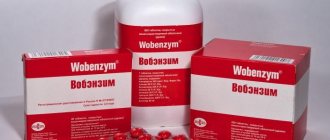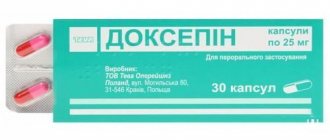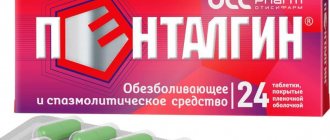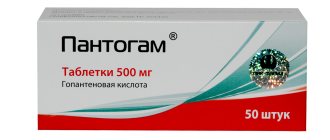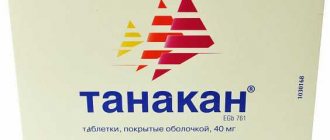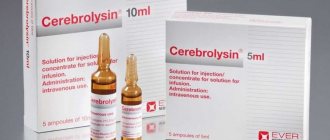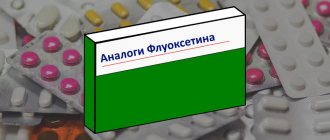Prohibited during pregnancy
Prohibited during breastfeeding
Has restrictions for children
Has restrictions for older people
Has limitations for liver problems
Has limitations for kidney problems
In recent decades, drugs based on enzymes with proteolytic activity are increasingly used. At the moment, medications that contain hyaluronidase and substances similar in action are prescribed for the treatment of gynecological, urological, dermatological problems, and are also used in pulmonology, surgery, orthopedics, and traumatology.
One of these drugs is Longidaza. International nonproprietary name – Azoximer bovhyaluronidase (compound of lidase with N-carboxyethyl and 1,4-ethylene piperosine). A special feature is the duration of the proteolytic and anti-inflammatory effect. Longidaza also has immunomodulatory and antioxidant properties.
The main area of application is diseases caused by excessive growth of connective tissues. These include: adhesive disease, pulmonary fibrosis, systemic scleroderma. Longidaza is used in cosmetology to eliminate scars and scars, and in professional sports to restore joint mobility after injuries.
Longidaza
After surgical interventions, it is prescribed to prevent the formation of adhesions. Longidaza has more than 10 analogues, which can be purchased in pharmacies much cheaper than the original drug. Considering that enzyme preparations are sold by prescription, if it is necessary to change the medication, you should consult a specialist.
pharmachologic effect
Manufacturer: NPO Petrovax Pharm LLC, Russia
Release form: rectal and vaginal suppositories, lyophilisate for the preparation of solution for injection
Active ingredient: longidase (bovhyaluronidase azoximer)
Synonyms: Longidaza
Longidase is a highly effective drug based on a conjugate of a specific high-molecular carrier and the enzyme hyaluronidase. This composition provides a combination of enzyme activity with a number of other effects due to the structural features of the active substance. Thus, Longidaza quickly and effectively reduces the viscosity of glycosaminoglycans, binds water and metals, eliminates swelling, improves tissue nutrition, eliminates inflammation, and exhibits antioxidant and immunomodulatory effects. The product prevents the formation of rough scars and adhesions, and also promotes the resorption of existing ones. The drug has very low toxicity and is well tolerated by patients.
Indications for use of Longidase
Longidaza is widely used in the treatment of pathologies accompanied by the proliferation of connective tissue:
- adhesions in the pelvic organs, as well as due to surgical interventions in the abdominal cavity;
- chronic prostatitis;
- wounds that take a long time to heal;
- scleroderma;
- onychodystrophy;
- scars due to burns, injuries, wounds, cosmetic procedures and operations;
- fibrotic lung diseases;
- arthrosis;
- interstitial cystitis;
- joint contractures;
- hematomas;
- arthritis.
It has been established that Longidaza and its close analogues significantly increase the bioavailability and effectiveness of many drugs: antibiotics, local anesthetics, pulmonary, urological and gynecological drugs.
Inexpensive substitutes for injections
If Longidase is not available in the pharmacy, financial resources are limited, or if adverse reactions develop, you can use analogues of this medicine, which are also available in the form of a powder concentrate.
Ronidaza
The enzyme preparation, which has the international nonproprietary name Hyaluronidase, is a powdery mass that contains hyaluronidase, a proteolytic enzyme with the ability to destroy mucopolysaccharides. The therapeutic effect is due to an increase in the permeability of vascular walls, as well as the elimination of swelling and a decrease in the density of connective tissues.
Ronidase also has a membrane-stabilizing and kelloidolytic effect, which allows it to be used topically to eliminate scars and scars. This remedy is most often used for fibrosis, arthrosis and arthropathy.
The drug is prescribed as an adjuvant therapy to improve the delivery of active substances to target organs. However, in the presence of infections of bacterial origin, as well as tumors of various localizations, you should refrain from therapy using Ronidase.
Before intramuscular or intravenous administration, add 1-2 ml of solvent (physiological saline solution or sterile water for injection) to the vial with the enzyme and mix in a circular motion until a homogeneous liquid is formed. The duration of therapy, frequency and method of administration of Ronidase are determined by the attending physician, taking into account the age, weight and condition of the patient's body. At the moment, the drug is not on sale, as re-registration is required.
Liraza
An immunopreparation with proteolytic activity is produced domestically in glass bottles with a tight rubber stopper (packages No. 5 and 10). INN – Hyaluronidase. Each bottle contains a homogeneous powdery porous mass of white color with a creamy tint, odorless. The active substance for the production of this medicine is obtained by processing material from the testes of cattle.
This drug is capable of destroying connective tissue fibers, as a result of which the permeability of capillaries and surrounding tissues increases and the outflow of interstitial fluid improves.
The main mechanism of action is the activation of the breakdown of mucopolysaccharides, in particular hyaluronic acid.
In accordance with the instructions for use provided by the manufacturer, Lyraza is effective in the treatment of the following pathologies:
- hyperproliferation of cartilage tissue, which makes movement difficult;
- systemic connective tissue diseases (scleroderma);
- diseases of the musculoskeletal system (osteoarthrosis, ankylosing spondylitis);
- hereditary and congenital contractures;
- scars of various origins;
- lung diseases with the development of obstructive and hyperproliferative syndromes (cystic fibrosis, tuberculosis);
- rheumatoid arthritis (including juvenile);
- hydrocephalus;
Hydrocephalus
- myocardial infarction and ischemic stroke;
- in neurology to eliminate inflammation of nerve trunks and plexuses;
- in ophthalmology for retinopathy, hemophthalmia;
- in aesthetic cosmetology to improve skin condition.
There are restrictions for the use of Lyraza. The main ones:
- blood clotting disorder
- acute inflammatory diseases of infectious etiology,
- taking hormonal drugs (COCs, estrogens).
Lidaza-Belmed
The medication is produced in the Republic of Belarus. Available in 5 ml glass bottles containing 64 IU of hyaluronidase. According to the modern pharmaceutical classification, Lidaza-Belmed belongs to the group of drugs that have proteolytic and fibrinolytic activity.
The mechanism of action is due to the ability of hyaluronidase to destroy polysaccharides into simple components, which reduces the density of connective tissue. The main area of application is orthopedics and traumatology. Lidaza-Belmed effectively eliminates joint contractures caused by hyperproliferation of connective tissue. Indications for use also include arthritis and arthrosis, neuritis, plexitis, and scars. Lidase can be used as a combination therapy to improve the absorption of drugs that are administered subcutaneously and intramuscularly.
Prescribing this drug to pregnant and lactating women is prohibited according to the instructions. Contraindications include acute infections, tumors, and increased bleeding.
The resulting solution can be administered in the following ways:
- subcutaneously;
- intramuscularly;
- inhalation.
Among the undesirable reactions, the development of urticaria, skin itching, and headache is possible. If the injection technique is violated, injection infiltrates and abscesses can form.
An overdose is accompanied by a violation of the general condition of the body, weakness, dizziness, nausea and vomiting, as well as a clotting disorder.
The minimum duration of treatment is 6 days, which can be increased to 30 if there are appropriate indications. The frequency of administration is also selected individually; injections are usually performed once every 2-3 days, in severe cases daily.
Laprote
An original drug that does not have an INN. According to the anatomical and therapeutic classification of the latest revision, it belongs to the group “V03A Other therapeutic drugs”.
The powder for preparing the solution contains a polyfunctional glycoprotein, which is obtained from breast milk. It has pronounced detoxification and antioxidant properties, and also has moderate anti-inflammatory and immunomodulatory effects. Lactoferrin is an important factor in cellular immunity, which makes it possible to fight infections of bacterial, viral, and fungal origin.
The most common indications for use are infectious diseases, as well as intoxication in cases of impaired detoxification and excretory function of the kidneys and liver. Lactoferrin should not be used by persons who have a history of allergic reactions to protein preparations. There is no experience of use in children and women during pregnancy and lactation.
There are two ways to administer this drug:
- Intravenous. Saline solution is used as a solvent in a ratio of 1 bottle (50 mg of lactoferrin) per 250 ml. The rate of administration is 1-3 ml per minute. 1-2 infusions are given per day. The minimum course is 5 days.
- Endotracheal. To prepare the required solution, a bottle of powder (50 mg) is diluted with 50 ml of sodium chloride. It is necessary to inject 1-3 ml of the prepared solution through a special tube at intervals of 120 minutes for 2-3 days, then switch to intravenous administration.
No cases of overdose have been recorded. During treatment, the following undesirable reactions may develop:
- low-grade fever;
- chills;
- headache;
- weakness, sleep disturbances;
- nausea.
See also:
List of the cheapest substitutes for Heptral®: TOP 5 analogues of the drug
Longidaza - instructions for use
Depending on the nature and localization of the pathological process, Longidaza is prescribed subcutaneously, intramuscularly, rectally, vaginally or externally. For injection use, the contents of the bottle are dissolved in a solution of Novocaine or Sodium chloride. The dosage of the active substance is selected by the doctor and ranges from 1500 to 4500 IU of Longidase. The frequency of drug administration is once every 3-5 days. The number of injections per course of therapy is 5-20 injections.
External use of the product is possible using photophoresis, ultrasound, ultraphonophoresis. For these procedures, Longidaza at a dosage of 3000 IU is diluted in sterile water, and then mixed with ultrasound gel, petroleum jelly, or used for topical application to the required areas. The duration of the course of treatment is about 15 procedures.
Suppositories in a dosage of 3000 IU are used rectally in patients over 12 years of age and vaginally in patients over 18 years of age. The daily dose of the drug is 1 suppository rectally/vaginally per day at night in a lying position. The duration of treatment is from 10 to 20 days.
Allergic reactions during treatment with Longidase rarely develop and often disappear on their own. The drug is not prescribed in the presence of acute inflammatory diseases, oncological pathologies, in patients under 18 years of age, as well as in women during lactation and pregnancy.
Cheaper analogues in the form of candles
Suppositories are the most convenient form of use of drugs containing proteolytic enzymes, since they can be used in seriously ill patients. A huge advantage is also the creation of maximum concentration of the substance in target organs when introducing a suppository through the vagina or rectum.
Polyoxidonium
produces several types of suppositories with proteolytic enzymes. An analogue of Longidase in suppositories from this manufacturer is Polyoxidonium. This drug is also available in tablets and lyophilisate. Its effectiveness is confirmed by many years of experience and a huge number of reviews from our compatriots, and the price compares favorably with imported analogues.
According to the international pharmaceutical classification, it belongs to the group of immunostimulants, and its non-proprietary name is similar to the active substance - azoximer bromide. The scope of application is determined by the following clinical properties of the drug:
- antioxidant;
- antiproliferative;
- anti-inflammatory;
- immunomodulatory.
Action of Polyoxidonium
The mechanism of action is a regulatory effect on cells of the immune system, in particular phagocytes, macrophages, as well as stimulation of antibody production due to the activation of B lymphocytes.
The scheme of application depends on the form of release:
- Candles. They can be administered into the vagina or rectum daily, and also on the recommendation of a doctor, depending on the indications, once or twice a week. Most often they are prescribed for exacerbation of infections of the reproductive and urinary system (vaginitis, cystitis, urethritis), inflammatory bowel diseases (colitis, proctitis), to activate repair and healing processes in case of extensive burns and injuries.
- Pills. Intended for resorption and/or oral administration. The most common indications for their use are ARVI and inflammatory diseases of the respiratory system. The daily dose is selected individually and divided into 2 doses.
- Lyophilisate for preparing a solution. The prepared solution can be used for intravenous and intramuscular injections, locally intranasally and sublingually. The dose is calculated taking into account the weight and age of the patient; physiological sodium chloride solution or sterile water for injection is used as a solvent.
Polyoxidonium in this form of release is prescribed for the treatment of acute inflammatory diseases of the respiratory system, digestive tract, to stimulate the immune system, and in the development of acute allergic reactions.
Properties of Polyoxidonium
This medicine is used in pediatrics in the form of a lyophilisate from 3 months, suppositories - from 6 years, and tablets after 3 years. Pregnancy, breastfeeding, acute and chronic liver and kidney failure are contraindications to the use of any of the forms.
Biostrepta
The combined antithrombotic drug is produced by the Polish company Biomed Warsawa in the form of suppositories for rectal administration. The enzymes streptokinase (15,000 IU) and streptodornase (1,250 IU) included in the composition have not only a fibrinolytic effect, but also eliminate inflammation, improve microcirculation and facilitate access of other drugs to target organs.
The basis in the production of these suppositories is Witepsol, which is the most modern suppository base and is a mixture of solid fats with a low hydroxyl number. The shape of the candles resembles a cylinder with one cone-shaped end, the color is white or cream, and there is no smell.
It is used in gynecology to eliminate signs of inflammation of the appendages and uterus, and there is also experience of use in the fight against tubal factor infertility. In surgery and proctology, it is most widely used in the treatment of acute and chronic hemorrhoids, proctitis, colitis, and pararectal fistulas.
Tubal infertility
It is prohibited for pregnant women, nursing mothers, and children under 16 years of age, according to the manufacturer’s official instructions. Given the ability of this medicine to increase bleeding, the use of Biostrepta should be avoided in persons with coagulation disorders.
Treatment is usually well tolerated. No cases of overdose have been recorded. However, if it comes into contact with damaged skin or mucous membranes, itching, discomfort, and redness may occur. In this case, treatment is canceled.
Usually Biostrepta is prescribed for 10-12 days. In the first three days, 1 suppository is administered three times a day, then gradually switch to a single dose. The drug should be protected from exposure to direct sunlight; optimal storage conditions are in the refrigerator at a temperature of +2 to +8 C.
Dystreptase
These suppositories belong to the group of combined enzymatic antithrombotic agents, which corresponds to the International Anatomical Therapeutic Classification. A special feature of this medicine is the presence of two active components that enhance each other’s effect. Each suppository contains 15,000 IU of streptokinase and 1,250 IU of streptodornase. Mineral oils and solid fat are used as a base. The suppositories are cylindrical in shape, narrowed on one side for ease of insertion. The color is white, there is no specific smell.
The mechanism of action is associated with the activation of plasminogen and its conversion to plasmin, which has fibrinolytic properties and dissolves blood clots. The dissolution of dead cells, as well as tissue breakdown products, is achieved due to the ability of streptodornase to destroy proteins and nucleic acids. In this case, there is no negative effect on living cells.
Among the main indications for use are the treatment of inflammation of the pelvic organs (endometritis, salpingo-oophoritis), intestinal pathologies (colitis, proctitis), and elimination of symptoms of hemorrhoids. There are studies that indicate the effectiveness of using Dystreptase to prevent adhesions after surgery.
According to the instructions, these suppositories should not be used by pregnant women, nursing mothers or children. Contraindications include blood clotting disorders and individual intolerance to the components. It is necessary to avoid contact of the candle with damaged areas of the skin and mucous membranes.
Usually 1 suppository is prescribed 3 times a day with a gradual reduction in the frequency of administration to 1 r/day. The duration of treatment should not exceed 10-12 days. Dystreptase is sold in packages No. 6 with a prescription. To preserve the physical and chemical properties, these suppositories must be stored in the refrigerator.
See also:
TOP 6 cheaper analogue drugs of Acipol®
Longidase analogs
Complete analogues of the active substance are not available on the pharmaceutical market. The closest substitute for Longidase in action and composition is the drug Lidaza, which contains the enzyme hyaluronidase.
If it is necessary to choose what to replace Longidaza with, the doctor must take into account the type of disease in order to select not only drugs with similar effects, but also prescribe the most suitable form of release of the analogue.
For prostatitis, the most effective substitutes are the following:
- Vitaprost;
- Prostatilen;
- Pharmaprost;
- Prostatilen-Zinc;
- Staton;
- Afala;
- Bioprost;
- Pravenor;
- Prostate plus;
- Proxelan;
- Prostalin;
- Speman;
- Prostamol Uno;
- Afalase;
- Adenoprosin;
- Omnic;
- Proflosin;
- Tamsulosin;
- Tykveol;
- Focusin;
- Urorek;
- Neoprost;
- Gentos.
The list of Longidase analogues includes drugs with different compositions, costs (the drugs are more expensive and cheaper) and the mechanism of action in the form of rectal suppositories, capsules, tablets, drops, injections, which are used in the treatment of prostatitis and prostate adenoma in men.
In gynecology, Longidase analogs are most often used in the form of vaginal suppositories for the treatment of adhesions and inflammatory processes in women:
- Polyoxidonium;
- Galavit;
- Giaval;
- Gynodek;
- Gial-Eros.
A number of enzyme preparations for oral administration and in other forms can also be considered analogues of Longidase, the action of which is aimed at improving tissue trophism, resolving adhesions, and accelerating wound healing. Such means include the following:
- Wobenzym;
- Phlogenzyme;
- Methyluracil;
- Contractubex gel;
- Recreol;
- Movinase;
- Serrata;
- Fibrinase.
List of Longidase analogues with prices
| Drug name | Active substance | Release form | Manufacturer | Minimum dosage cost |
| Longidaza | Longidase (bovhyaluronidase azoximer) | Rectal and vaginal suppositories, lyophilisate for the preparation of solution for injection | NPO Petrovax Pharm LLC, Russia | From 1900 rub. |
| Vitaprost | Prostate extract | Rectal suppositories, film-coated tablets | Nizhpharm JSC, Russia | From 1000 rub. |
| Prostatilen | Rectal suppositories, lyophilisate for the preparation of solution for injection | Cytomed MBNPK JSC, Russia | From 150 rub. | |
| Lidaza | Hyaluronidase | Lyophilisate for the preparation of solution for injection | Microgen NPO JSC, Russia | From 380 rub. |
| Afalaza | Antibodies to NO synthase, antibodies to prostate-specific antigen | Lozenges | Materia Medica NPF, Russia | From 600 rub. |
| Adenoprosin | Complex Adenoprosin | Rectal suppositories | BIOTEHNOS SA, Romania | From 800 rub. |
| Prostamol Uno | Palma repens extract | Capsules | RP SCHERER GmbH, Germany | From 730 rub. |
Longidaza or Vitaprost
Manufacturer: Nizhpharm JSC, Russia
Release form: rectal suppositories, film-coated tablets
Active ingredient: prostate extract
Synonyms: Prostatilen
Vitaprost can be considered a cheaper analogue of Longidase with a limited spectrum of activity. This drug is used only for prostatitis in men, which is explained by its active substance prostate extract. The specific effect, stronger and more pronounced effect on the condition of the prostate gland, as well as differences in manufacturers and release forms (tablets and suppositories) compared to Longidase suppositories allow the widespread use of this analogue only for the treatment of prostate pathologies. Both drugs can effectively replace each other, providing an anti-edematous, anti-inflammatory effect. Often such analogues are used as part of complex therapy for prostatitis.
Experience of using Longidase in the complex treatment of women with chronic cystitis
The results of a study of the effect of the drug Longidaza on microcirculation of the bladder in the complex treatment of women with chronic cystitis are presented. The use of the drug Longidaza contributed to the regression of the immunoinflammatory process, an increase in the elasticity of the detrusor and better penetration of antibacterial drugs into the submucosal layer, which led to a decrease in the severity of pain, a lengthening of the interval between urination and an increase in the effective volume of the bladder. The latter is especially important for interstitial cystitis. The positive effect of using Longidase was confirmed by an improvement in the cystoscopic picture and microcirculatory processes in the bladder wall. During therapy with Longidaza, no local or general adverse or allergic reactions were observed.
Table 1. Duration of the disease in patients with chronic cystitis, abs.
Table 2. Complaints of patients of the main and control groups before and after treatment, abs. (%)
Table 3. Data from urination diaries of patients of the main and control groups before and after treatment, abs. (%)
Results of bacteriological examination of urine of patients of the main and control groups
Table 4. Data from cystoscopic examination of patients in the main and control groups before and after treatment, abs. (%)
Table 5. Indicators of basal blood flow of the mucous membrane of the bladder wall in healthy women, patients of the main and control groups before and after treatment
Table 6. Amplitude-frequency spectrum of blood flow oscillations in the mucous membrane of the bladder wall in healthy women and patients of the main and control groups before and after treatment
Introduction
Urinary disorders in most cases are associated with chronic recurrent inflammatory processes, changes in hormonal levels, and innervation disorders, which are usually accompanied by microcirculation disorders in the wall of the bladder and adjacent organs [1, 2].
According to statistical data, 26–36 million cases of acute cystitis are registered annually in Russia [3, 4]. It has been established that 50% of women after an episode of cystitis develop a relapse within a year, in 27% of young women it occurs within six months, and in 50% of cases relapses are observed more than three times a year [3, 5, 6]. Thus, chronic cystitis in women is a common disease and is characterized by a long, persistent course.
Despite the keen interest of urologists, the problem of treating chronic cystitis is still far from a final solution [7]. The insufficient effectiveness of therapy and frequent recurrence of the disease are due to the lack of a rational approach to the implementation of therapeutic measures [8–10]. The complexity lies in the polyetiological nature of cystitis and the many factors that support the course of the pathological process in the bladder wall [11–14]. Disturbances in the urodynamics of the lower urinary tract, microcirculation in the bladder mucosa and the presence of a bacterial agent largely contribute to the development and maintenance of the inflammatory process in the bladder [1, 4, 15]. A decrease in blood flow intensity leads to hypoxia and disruption of metabolic homeostasis in tissues, which plays an important role in the pathogenesis of this condition. The issues of correcting the clinical manifestations of urinary disorders in women have not yet been sufficiently studied, so therapy for such disorders is ineffective.
In recent years, significant advances have been made in the pharmacotherapy of diseases of the genitourinary tract. New drugs for the treatment of inflammatory diseases of the pelvic organs are being introduced into clinical practice. Currently, for diseases accompanied by connective tissue hyperplasia, as well as to influence the immunoinflammatory process, drugs containing the long-acting enzyme hyaluronidase are actively used [16]. One of these drugs is the domestic drug Longidase, a conjugate of hyaluronidase with an activated derivative of poly-1,4-ethylenepiperazine N-oxide. Hyaluronidase, acting on hyaluronic acid as a connective tissue substrate, increases the permeability of tissue barriers, reduces their swelling, promotes the resorption of inflammatory exudate, and increases the elasticity of sclerotic tissue. This leads to an increase in the elasticity of the detrusor, a decrease in pain, and an increase in bladder volume, which is primarily necessary for the treatment of interstitial cystitis. Presumably, activation of organ circulation significantly improves energy metabolism and adaptive properties of the detrusor, which contributes to the regression of clinical symptoms during treatment and indicates the need for further study of the effect of Longidase on the vascular system of the bladder.
Currently, the issues of microcirculation and the possibilities of determining microcirculatory disorders in clinical practice are given great importance [2, 4, 15]. According to many domestic and foreign authors, the study of regional microcirculation deserves special attention in connection with its participation in the processes of repair, morphological and functional restoration of tissue and organs after various alterations and therapeutic effects. Identification of pathology of microcirculation is important for diagnosis, assessment of the severity of pathological processes in the body, control over treatment and prediction of its effectiveness. Laser Doppler flowmetry is a modern method for assessing the state of microcirculation, based on changes in the frequency characteristics of a laser beam probing tissue when it is reflected from moving blood components, primarily erythrocytes [4].
Purpose of the study
To evaluate the effect of the drug Longidaza on microcirculation of the bladder as part of the complex treatment of women with chronic cystitis.
Material and methods
The study was conducted at the clinical base of the Department of Urology and Andrology of the Altai State Medical University in the conditions of the urology department of the departmental clinical hospital at the Barnaul station of JSC Russian Railways.
40 women with chronic cystitis aged from 20 to 58 years (average age 35 ± 2.7 years) were examined. The patients were divided into main and control groups of 20 people each. Patients in the control group received complex conservative treatment, which included Suprax/Suprax Solutab 400 mg for six to seven days, Furamag 50 mg three times a day and herbal preparations for ten days. Patients in the main group were prescribed the same complex conservative therapy and Longidase rectally once every three days (20 suppositories per course).
Previously, many patients repeatedly received treatment both in outpatient and inpatient settings. The duration of chronic cystitis ranged from ten months to ten years (Table 1). Diagnosis of the disease was carried out on the basis of a set of anamnestic and objective clinical data, laboratory and instrumental examination methods. At the first visit, a special card was created for each patient, which noted the features of the medical history and disease, and data from additional examination methods. When collecting complaints, attention was paid to the intensity and severity of pain, frequency of urination, and the feeling of incomplete emptying of the bladder. The medical history included the duration of the disease, factors preceding the onset of the disease, types of previous treatment and their effectiveness, and the duration of the relapse-free period. The gynecological status was carefully noted. Foci of chronic infection were identified as a possible source of infection of the bladder through a descending route.
All women before and after the course of therapy underwent the following studies: clinical blood test according to generally accepted methods, general urine analysis to detect leukocyturia, bacteriuria, hematuria, bacteriological urine culture to determine sensitivity to antibiotics. Biochemical blood test included determination of urea and creatinine.
Before the start and one month after the end of treatment, patients of the main and control groups kept a urination diary. Based on the results of the frequency of urination and the volume of urine excreted initially and after treatment, the dynamics of dysuric disorders were judged.
An integral part of the examination was cystoscopy to determine the condition of the bladder mucosa. Endoscopic examination was performed in all patients using a Storz endoscope. When examining the mucous membrane of the bladder, attention was paid to areas of hyperemia, hemorrhages, the presence of erosive and ulcerative defects, the condition of the mucosa in the area of Lieto's triangle and the bladder neck, the severity of the vascular pattern, trabecularity, and the presence of residual urine.
To study the microcirculation system of the mucous wall of the bladder in women with urinary disorders, laser Doppler flowmetry was used using a laser blood microcirculation analyzer LAKK-02 (NPP LAZMA, Russia). It consisted of two emitters for probing tissue in the visible red region of the radiation spectrum and the infrared region, a photodetector and light guide probes, which included three light guides enclosed in a common light-proof bundle. Registration of blood flow in the bladder mucosa implies an invasive study of blood microcirculation, therefore, points with clear localization and good blood supply were selected for laser Doppler flowmetry. The parameters of basal blood flow were calculated. Initially, the average values of changes in perfusion were calculated: the arithmetic mean value of the microcirculation index (M), standard deviation (σ) and coefficient of variation (Kv). Next, blood flow oscillations were analyzed. At the second stage, the amplitude-frequency spectrum of perfusion oscillations was analyzed. Vascular tone and the state of functioning of certain perfusion control mechanisms were assessed by the amplitudes of blood flow fluctuations in specific frequency ranges.
After the examination, the patients received treatment according to the above regimen. A month later, they were re-examined to assess the effectiveness of treatment, which was determined by the results of control bacteriological urine culture, relief of the inflammatory process in accordance with the data of a general urine test, and the disappearance of clinical symptoms. Changes in the bladder mucosa were assessed based on the results of repeat cystoscopy.
A comparative analysis of quantitative variables characterizing the clinical, laboratory and functional state of the urinary system was carried out using descriptive statistics using nonparametric Wilcoxon and Mann–Whitney tests. Data processing and graphical presentation were performed using Statistica 6.0 and Microsoft Excel 2003 computer programs.
results
The most common complaints of patients were pain in the projection of the bladder, frequent urination in small portions, a feeling of discomfort in the urethra, painful or uncomfortable urination, and a feeling of incomplete emptying of the bladder (Table 2). The severity of dysuric disorders was also reflected by the patients in urination diaries, which they kept for 24 hours before and a month after the end of the course of treatment (Table 3). Based on the results of the conversation and filling out urination diaries, it turned out that patients in the main group more often noted a decrease in the intensity of the clinical picture of the disease and the severity of dysuric disorders.
Indicators of clinical blood analysis and nitrogen excretory function of the kidneys in patients of both groups were within normal limits.
According to the results of a general urine test, leukocyturia, bacteriuria, and microhematuria occurred. The content of leukocytes more than 10 per field of view was observed in 11 (27.5%) patients. Red blood cells were detected in four (10%) patients. Microscopy revealed bacteriuria in 16 (40%) cases. The rest of the patients had normal urinalysis results.
All patients underwent bacteriological examination of urine to determine the type of microorganism and the microbial count of urine. In 24 (60%) cases, the urine was sterile. Escherichia coli was detected in the remaining patients
,
Enterococcus
spp.,
Staphylococcus haemolyticus
,
Staphylococcus aureus
(picture).
According to studies conducted in our clinic, in chronic cystitis, the infectious agent penetrates the wall of the bladder, and is not detected in the urine during culture, which is a sign of interstitial cystitis [17]. In this regard, all patients, even with sterile urine cultures, received antibiotic therapy.
When analyzing the endoscopic picture, areas of diffuse hyperemia were often noted, and there were growths of the bladder mucosa (Table 4). The changes mainly affected the area of the bladder triangle and the bladder neck. The integumentary epithelium in the affected areas lost its shine, acquired a dark red color, became swollen, and bled easily. Thus, the cystoscopic picture in the patients of the main group after treatment was more consistent with the norm. Hyperemia, petechial hemorrhages, and bullous edema decreased, which indicates the anti-inflammatory effect of the drug Longidaza.
In both groups, no changes were found in clinical and biochemical blood tests. According to the results of bacteriological urine culture, only one (5%) patient in the control group had microflora represented by Staphylococcus epidermidis
. The remaining urine samples were sterile.
According to the results of cystoscopy, one month after the course of treatment in the control group, in contrast to the main group, pronounced changes in the mucous membrane for the better were noted (decreased hyperemia, petechial hemorrhages, bullous edema), which indicates the anti-inflammatory effect of the drug Longidaza.
When assessing the state of microcirculation using laser Doppler flowmetry, changes in basal blood flow, rhythm and amplitude-frequency spectrum of blood flow oscillations were recorded in all patients with chronic cystitis (Tables 5 and 6).
In the microvasculature of the mucous membrane of the bladder wall in healthy women (data taken from our previously published works [18]), slow rhythms prevailed with a frequency of 1–10 vibrations per minute with the highest intravascular resistance with these rhythms and an active microcirculation mechanism. In patients with chronic cystitis, compared with healthy women, the results of laser Doppler flowmetry indicated intravascular microcirculation disorders in the bladder. They were manifested by a slowdown in the average blood flow and statistically significant fluctuations in red blood cell velocity, as well as a decrease in the coefficient of variation. There was a significant decrease in neurogenic tone in the precapillary, an increase in myogenic tone, a shunt index, and a decrease in the microcirculation efficiency index. There was a deterioration in tissue perfusion compared with healthy women. This indicates a violation of microcirculation in the tissues of the bladder against the background of urination disorders as a result of a slowdown in blood flow associated with a decrease in arterial blood inflow, as well as a violation of venous outflow and creates conditions for the development of intravascular rheological disorders in the wall of the bladder. A decrease in blood flow modulation and coefficient of variation indicators, a decrease in myogenic and neurogenic tone, an increase in bypass rate and a moderate decrease in the microcirculation efficiency index were recorded. In the mucous membrane of the bladder wall, there was a statistically significant decrease in the amplitude of pulse and slow oscillations, an increase in the amplitude of fast oscillations, a significant increase in the active mechanism of microcirculation and a decrease in the parameters of the passive regulatory mechanism and vascular tension in patients of the main group (Table 6). When analyzing the amplitude-frequency spectrum, a significant decrease in blood stagnation in the venular link was determined, which was expressed by a decrease in the contribution of HF oscillations. The amplitude of CF oscillations also decreased.
During the study, no drug intolerance or side effects were observed in patients of the main and control groups during treatment.
When assessing long-term results within a month after treatment, two (10%) patients in the control group and one (5%) patient in the main group experienced a short-term episode of exacerbation of cystitis, which was relieved by taking uroseptics.
The discussion of the results
In all patients, the severity of clinical manifestations of the disease decreased, and dysuric symptoms were relieved. According to the results of a bacteriological study, against the background of conservative treatment, a persistent antimicrobial effect was observed in both groups. According to the analysis of the results of cystoscopic studies, treatment with antibiotics and uroseptics contributed to the regression of the endoscopic picture in chronic cystitis in women of both groups. However, in patients receiving Longidase, the cystoscopic picture was closer to normal.
The study of the blood circulation of the capillary vascular bed using laser Doppler flowmetry made it possible to study changes in microcirculation in the mucous membrane of the bladder wall of patients with chronic cystitis before and after treatment. After treatment, there was an increase in the neurogenic tone in the precapillary, the shunt index and the microcirculation efficiency index, as well as the microcirculation index and the coefficient of variation, which indicates an improvement in microhemocirculation. Improvement in microcirculation was observed in patients whose complex treatment included the drug Longidaza. The higher effectiveness of treatment with Longidase is associated with increased permeability of the bladder wall and improved access of antibiotics to foci of inflammation located in the submucosal layer.
conclusions
The drug Longidaza contributed to the regression of the immunoinflammatory process, increased elasticity of the detrusor and better penetration of antibacterial drugs into the submucosal layer, which led to a decrease in the severity of pain, lengthening the interval between urination and an increase in the effective volume of the bladder in patients with chronic cystitis. The positive effect of using Longidase was confirmed by an improvement in the cystoscopic picture and microcirculatory processes in the bladder wall. When using the drug Longidaza, no local or general adverse reactions or allergic reactions were observed.
Longidiza or Lidaza
Manufacturer: Microgen NPO JSC, Russia
Release form: lyophilisate for the preparation of solution for injection
Active ingredient: hyaluronidase
Synonyms: Lidaza-M
Lidaza is the closest analogue of Longidase in terms of its effects. This medicine has a smaller spectrum of pharmacological activity, which can be explained by the presence of hyaluronidase in a simple form. The difference between these substitutes is not only in the composition and manufacturers, but also in the forms of release, as well as some effects. Lidase is characterized only by its effect on the viscosity of connective tissue, reduction of scars, improvement of outflow and movement of fluids in tissues. This analogue is used only in the form of injections.
Release forms, structural analogues and prices
The manufacturer of Longidase is a domestic pharmaceutical company (Russia, Moscow). For ease of use, there are several release forms and dosages:
- Suppositories for vaginal and rectal administration. Contains 3000 IU of active substance, cocoa butter is used as a substrate. The shape is oblong with one edge narrowed, the color is white, minor yellow inclusions and marbling are allowed, the smell is specific. Each candle is placed in a plastic cell, one blister contains 5 candles. Packages No. 5, 10 and 20 are available for sale.
- Lyophilisate for the preparation of solution for injection. Available in doses of 1500 and 3000 IU of lidase in ampoules or transparent glass bottles filled with a white hygroscopic porous mass. A yellowish tint and isolated lumps are allowed.
In our country, it is possible to purchase cheaper analogues of Longidaza suppositories, which will differ in price and composition, but have similar mechanisms of action and clinical effects. This medicine is original and does not have complete structural analogues.
See also:
Indications for use and instructions for the drug Emoxipin
Longidaza or Prostamol Uno
Manufacturer: RP SCHERER GmbH, Germany
Release form: capsules
Active ingredient: creeping palm extract
Synonyms: Prostaplan, Prostacker, Prostatoff, Permixon
Prostamol Uno is a herbal preparation that is used only for the complex treatment of prostatitis in men. The product more effectively eliminates swelling and inflammation in the prostate gland, improves urine flow, slows down the proliferation of prostate tissue, and improves blood flow in it. Such an analogue can be prescribed with Longidase to increase the effectiveness of therapy for prostatitis or benign prostate adenoma. When changing drugs, their characteristics should be taken into account to ensure maximum effectiveness and safety for patients.
Prostamol Uno is used only orally in capsule form once a day after meals. The drug is prescribed for a long time to male patients over 18 years of age.
Longidaza or Afalaza
Manufacturer: Materia Medica NPF, Russia
Release form: lozenges
Active ingredient: antibodies to NO synthase, antibodies to prostate-specific antigen
Synonyms: Afala
Afalase is a combined homeopathic analogue with a pronounced effect on the functions and condition of the prostate gland in men. The drug contains active antibodies that are specific to prostate tissue. Such active substances in the analog composition allow Longidase to safely and effectively eliminate prostate swelling, reduce inflammation and impaired urine outflow. The product improves blood flow in affected tissues and external genitalia in men.
Afalase is used only internally in the form of lozenges. This analogue is intended for long-term use in male patients over 18 years of age.
The effectiveness of longidase in the correction of immunometabolic disorders in chronic salpingo-oophoritis
Infectious and inflammatory diseases of the pelvic organs in women are a complex and insufficiently studied medical and social problem in global health [14, 16, 17]. Among the entire spectrum of gynecological pathologies, they firmly occupy a leading position and are the main cause of violations of reproductive health and working ability of women. Their share is 65-70% in the structure of all gynecological diseases and does not tend to decrease, primarily due to chronic salpingo-oophoritis (CSO) [14, 18].
Such a widespread and constant increase in chronic salpingo-oophoritis occurs due to the fact that patients with acute and especially subacute inflammatory processes of the internal genitalia remain untreated due to late presentation of patients, untimely hospitalization, and insufficient effectiveness of the therapy. Primary chronic processes also contribute to this. According to modern data, in 50-70% of cases, acute salpingoophoritis becomes chronic, and advanced, long-term, therapy-resistant forms arise [13, 15].
Currently, the use of even the most modern medications does not always allow one to quickly stop the clinical manifestations of the disease, achieve clear remission, or prevent complications and relapses. The recurrence rate of exacerbation of CSO is 20-77.6% [6, 7, 11].
In connection with data on immunometabolic status disorders in patients with chronic salpingoophoritis, it is relevant to study these changes at the systemic and local levels and determine the effectiveness of standard treatment and various methods of pharmacological correction.
The purpose of the work is to identify the clinical and immunological effectiveness of using various dosage forms of Longidase in complex pharmacotherapy for exacerbation of chronic salpingoophoritis.
Material and methods. At the Regional Budgetary Healthcare Institution “Kursk Regional Perinatal Center”, 50 women aged 20 to 45 years with a diagnosis of chronic salpingoophoritis in the acute stage were under constant observation. The control group consisted of 18 healthy female volunteers of the same age.
All patients received standard conservative therapy, including antibacterial, antifungal and anti-inflammatory therapy. At the same time, 16 women additionally received Longidase in the form of suppositories (1 suppository 3000 IU per recti 1 time per day for 5 days) and 17 patients received Longidase in the form of injections (3000 IU intramuscularly 1 time per day for 5 days).
Laboratory examinations were carried out immediately upon admission to the hospital and upon discharge on the 14th day. In the blood plasma, the concentration of C3, C4 components of complement, factor H, TNFα, IL-18, IL-10, interferon-α (INFα) was determined using a ProCon reagent kit (Protein Contour LLC, St. Petersburg) [ 9]. In addition, the concentrations of malondialdehyde (MDA), ceruloplasmin (CP), stable metabolites of nitric oxide (CMNO), C-reactive protein (CRP), α2-macroglobulin (α2-MG), α1-antitrypsin (α1-AT) were determined at the systemic level. ) and total antioxidant activity (TAA) of blood serum and the activity of catalase and superoxide dismutase (SOD) [10].
Statistical processing of the study results was carried out using nonparametric methods. Differences with p<0.05 were considered statistically significant [8].
Results and discussion. In patients with CSO in the acute stage upon admission to the hospital, changes in immune and oxidative status at the systemic level were recorded. Thus, in the blood plasma the level of pro-inflammatory cytokines (TNFα and IL-18) is increased, with a decrease in the level of IL-10, the complement system is activated, as evidenced by the concentration of C3 and C4 components and a decrease in the level of factor H, the level of lipid peroxidation products increases (MDA), proteolytic enzymes, CMNO and CRP (Table 1).
After standard treatment, some changes in the immunometabolic status at the systemic level were revealed in patients with CSR. Thus, the level of IL-18, components of the complement system, proteolytic enzymes and CRP is corrected, but not to normal levels (Table 1).
Thus, in patients with CSO, there is a violation of a number of indicators of the immune status at the systemic level, while the standard pharmacological correction in such patients does not allow to fully correct both the immune and metabolic statuses, which dictates the advisability of searching and testing in clinical trials additional pharmacological agents and methods of immunorehabilitation of patients with CSO, in connection with which we established the immunometabolic effectiveness of the use of Longidase in patients with chronic salpingoophoritis in the acute stage. For this purpose, we used the drug “Longidaza” in the form of two dosage forms - a suppository and an injection form.
Longidase is a conjugate of the proteolytic enzyme hyaluronidase with a high-molecular carrier from the group of N-oxide-1,4-ethylenepiperazine derivatives. Longidase has the full range of pharmacological properties inherent in hyaluronidase [15].
As a result of hydrolysis (depolymerization), the viscosity of glycosaminoglycans and the ability to bind water and metal ions decrease. As a result, the permeability of tissues increases, their trophism improves, swelling decreases, hematomas resolve, the elasticity of scarred areas increases, contractures and adhesions are eliminated, and joint mobility increases. The effect is most pronounced in the initial stages of the pathological process.
Table 1. Indicators of immunometabolic status at the systemic level in patients with CSO during therapy using longidase in the form of suppositories (M±m)
Note: here and in table. 2 asterisks indicate significant differences in arithmetic means (p < 0.05); The numbers next to the asterisk indicate in relation to the indicators of which group these differences are given.
The drug Longidaza regulates (increases or decreases depending on the initial level) the synthesis of inflammatory mediators (IL-1 and TNFα), is able to weaken the course of the acute phase of inflammation, increase the humoral immune response and the body's resistance to infection. These properties make it possible to use the drug longidase in various pathological conditions (otorhinolaryngology, surgery, cardiology) [1-5, 12], including gynecological pathology [7, 15].
The use of Longidase in the form of suppositories in addition to the standard pharmacotherapy of CSR further normalizes the concentration of CRP, INFα, ceruloplasmin and the C3 component of the complement system. At the same time, the use of Longidase in the form of injections made it possible to additionally normalize TNFα, the C4 component of the complement system and factor H (Table 2).
The positive dynamics of immuno-metabolic status indicators coincided with the clinical effect of various treatment methods.
For example, 36.8% of patients with CSO after standard treatment have pain syndrome, 15% have algomenorrhea, 36.8% have an increase in basal temperature during menstruation, 32.2% have an increase in leukocytes in smears.
Table 2. Indicators of immunometabolic status at the systemic level in patients with CSO during therapy using longidase in the form of injections (M±m)
The maximum reduction in clinical manifestations was observed after additional use of Longidase in the form of injections; after the administration of this drug, there were no relapses of diseases, 13.3% of patients continued to experience pain and algomenorrhea, an increase in leukocytes in smears and an increase in basal temperature.
Thus, based on the studies conducted, it can be recommended to use in practical healthcare a scheme of pharmacological immuno-metabolic rehabilitation in patients with CSO at the acute stage using Longidase in the form of injections.
A treatment regimen using this drug in the form of suppositories is less effective in correcting impaired parameters of the immune and oxidative status.
Longidaza or Adenoprosin
Manufacturer: BIOTEHNOS SA, Romania
Release form: rectal suppositories
Active ingredient: Adenoprosin complex
Synonyms: Adenoprosin
Adenoprosin is a fairly similar analogue of Longidase in its effects with a pronounced effect only on prostate tissue in men. The drug is used only in the form of rectal suppositories for prostatitis, urinary outflow disorders, prostate adenomas. The drugs are characterized by a number of similar effects: antioxidant, anti-inflammatory effects, improvement of blood flow in prostate tissues. Adenoprosin also significantly improves urodynamics in patients with prostate hyperplasia. The action of this analogue also helps reduce pain in patients over 18 years of age and improve their quality of life.

